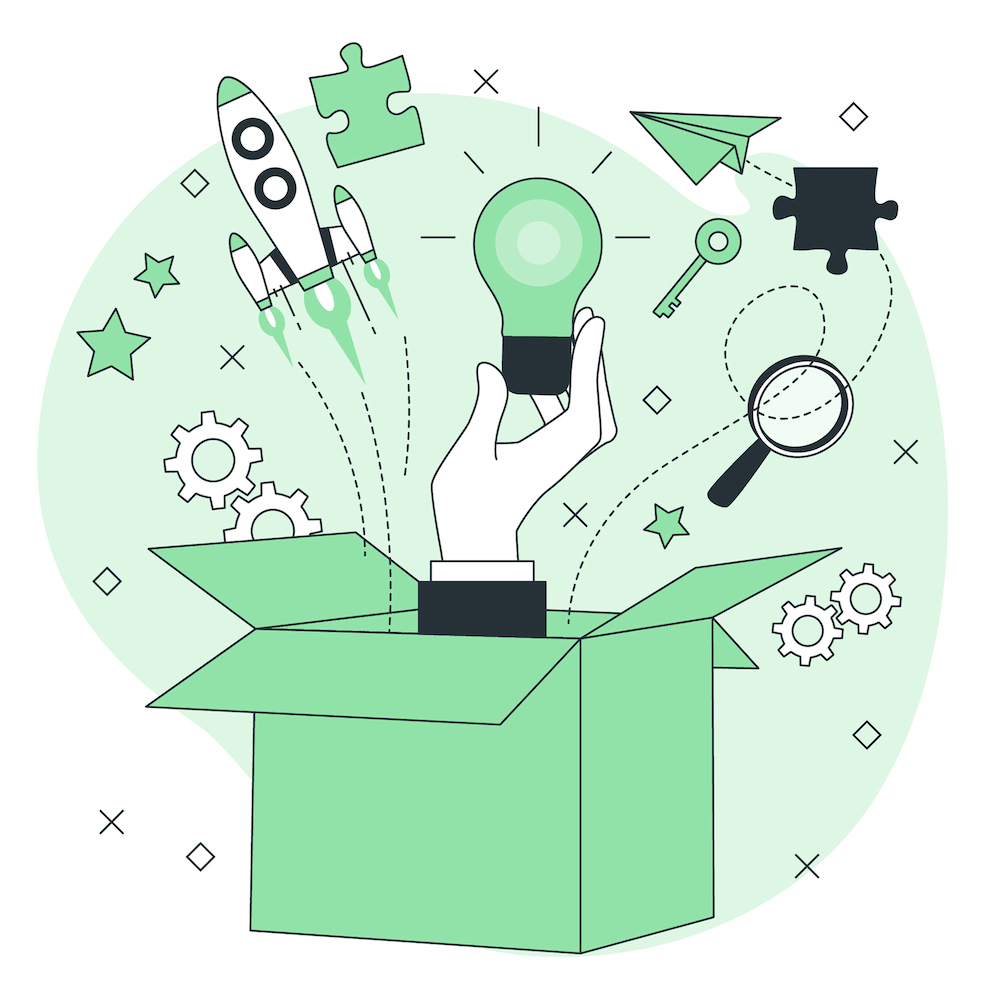This article will delve into the intricacies of customer segmentation, discussing different models and the benefits they bring to your business
Understanding your clientele through effective customer segmentation has never been more critical. This precise practice not only allows businesses to identify key groups within their market but also tailors their strategies to meet the specific needs and preferences of these segments. By employing customer segmentation, companies can enhance their marketing efforts, improve customer satisfaction, and significantly increase their competitive edge. Given its importance, getting to grips with the nuances of client segmentation, including the various segmentation methods and types of customer segmentation, is an essential skill for marketers and business owners alike.
This article will delve into the intricacies of customer segmentation, discussing different models and the benefits they bring to your business. We will explore the various types of customer segmentation, from demographic to behavior-based models, and the segmentation methods that can be applied to each. Furthermore, you'll learn how to conduct a segmentation analysis effectively, enabling you to develop a robust customer segmentation strategy. By incorporating real-world examples, this guide aims to provide you with a comprehensive understanding of how customer segmentation can be leveraged to drive business success, ensuring that you can apply these concepts to your operations with confidence.
Understanding Customer Segmentation
Customer segmentation is the strategic process of dividing customers into groups based on shared characteristics. This practice is crucial for developing more targeted marketing strategies and enhancing customer engagement and loyalty. By understanding and implementing effective customer segmentation, businesses can deliver tailored experiences that meet the specific needs and preferences of different customer groups.
Defining Customer Segmentation
At its core, customer segmentation involves categorizing customers based on various factors such as demographics (age, location, income), psychographics (motivations, preferences), and behaviors (purchasing habits, brand loyalty). This method allows companies to identify nuances in their customer base and address them with customized marketing efforts. For instance, sending targeted email campaigns, creating personalized shopping experiences, or offering tailored customer support solutions are all actions that stem from insightful customer segmentation.
Importance of Segmenting Customers
Segmenting customers is not just about recognizing their differences but also about effectively capitalizing on them. It helps businesses enhance their marketing precision, improve customer retention, and increase overall satisfaction. Here’s how:
- Enhanced Marketing Efficiency: By understanding what each segment values, companies can craft messages that resonate deeply with each group, increasing the relevance and effectiveness of their marketing efforts.
- Increased Customer Loyalty: Personalized interactions based on segmentation make customers feel understood and valued, which strengthens their connection to the brand and enhances loyalty.
- Optimized Resource Allocation: Segmentation ensures that marketing resources are not wasted on uninterested customer groups but are focused on prospects with the highest potential for conversion.
- Better Customer Insights: Through segmentation, businesses gather detailed insights about specific groups, enabling them to predict future behaviors and preferences more accurately.
- Strategic Product Development: By identifying the specific needs and wants of different segments, companies can design or modify products that appeal directly to those preferences, thus better meeting customer expectations.
Implementing customer segmentation effectively requires a deep understanding of your market and the ability to collect and analyze relevant data. It’s a dynamic process that evolves as you gain more insights into your customer base and as market conditions change. By continually refining your segmentation strategy, you can ensure that your marketing efforts remain relevant and impactful, fostering a strong, loyal customer base.
Types of Customer Segmentation Models
Demographic Segmentation
Demographic segmentation is a fundamental strategy where you group your audience based on observable characteristics such as age, gender, income, and education level. This type of segmentation is particularly effective for B2C businesses as it helps in crafting targeted marketing campaigns and tailoring product offerings to suit the needs of different demographic groups.
Geographic Segmentation
Geographic segmentation involves grouping customers based on their physical location. This method is crucial for businesses that vary their services or products based on local climate, cultural preferences, or regional demand. For example, a company might focus on selling different clothing lines in various regions depending on the local weather conditions.
Psychographic Segmentation
Psychographic segmentation goes beyond basic demographics to group customers based on their psychological attributes, including personality traits, values, attitudes, interests, and lifestyles. This segmentation helps in understanding the deeper motivations behind customer behaviors, enabling more personalized marketing strategies.
Technographic Segmentation
Technographic segmentation categorizes customers based on the technology they use and their interactions with it. This could include preferences for certain types of devices, software, or digital platforms. It's increasingly relevant in today's tech-driven market, where understanding technological preferences can enhance product development and customer outreach.
Needs-based Segmentation
Needs-based segmentation focuses on the specific requirements and desires of customers. This approach is about identifying and grouping customers by their needs, which can vary significantly, to tailor products and marketing messages that directly address these needs, thereby enhancing customer engagement and satisfaction.
Behavioral Segmentation
Behavioral segmentation divides customers based on their interactions with your brand, including their purchasing behaviors, product usage, and engagement patterns. This type of segmentation is invaluable for developing loyalty programs, personalized marketing, and improving user experience based on observed behaviors.
Value-based Segmentation
Value-based segmentation looks at the overall contribution of customers to your business. It involves categorizing them based on the revenue potential they represent. This method helps in prioritizing marketing efforts and resources towards the most profitable customer segments, ensuring optimal allocation of marketing budgets for maximum return on investment.
Benefits of Customer Segmentation
Enhanced Personalization
Customer segmentation plays a pivotal role in personalization, enabling you to tailor experiences that meet the specific needs and preferences of different customer groups. By understanding these distinct characteristics, you can create more effective marketing campaigns, product recommendations, and user experiences that resonate with each segment. This not only increases engagement but also enhances customer satisfaction, as your customers will feel that their individual preferences are being acknowledged and catered to.
Increased Customer Loyalty
Implementing effective customer segmentation strategies leads to increased customer loyalty. By segmenting customers based on factors like purchase behavior, preferences, and demographics, you can deliver targeted communications and offers that are highly relevant to each group. This relevance fosters a deeper connection between your brand and your customers, making them feel valued and understood, which in turn enhances their loyalty to your brand.
Improved Marketing Efficiency
Customer segmentation significantly boosts marketing efficiency by allowing you to focus your marketing efforts on the most receptive audience segments. By avoiding a one-size-fits-all approach and instead targeting specific groups, you can achieve higher click-through rates, better engagement, and improved conversion rates. This targeted approach not only saves time and resources but also increases the overall effectiveness of your marketing initiatives, leading to a higher return on investment.
By leveraging the insights gained from customer segmentation, you can enhance product development, optimize marketing strategies, and ultimately drive substantial business growth. Implementing these strategies allows you to meet the evolving needs of your customer base effectively, ensuring sustained success in a competitive market.
Methods for Conducting Customer Segmentation Analysis
Setting Clear Objectives
To effectively conduct customer segmentation analysis, you must first clearly define your objectives. These objectives should align with your company's strategic goals and address specific business needs. By establishing these goals upfront, you ensure that the segmentation process is focused and relevant. Consider involving stakeholders from various departments such as marketing, sales, and customer support to gain a comprehensive understanding of the objectives. This collaborative approach helps in defining a project scope that reflects the interests and insights of different areas of your business, thereby enhancing the overall effectiveness of the segmentation.
Collecting and Analyzing Data
The foundation of any successful customer segmentation analysis lies in robust data collection and analysis. Begin by gathering industry-wide data to understand broader market trends, then drill down into your specific customer data to identify unique characteristics and behaviors. Utilize both direct data streams, such as customer surveys and feedback, and indirect sources like social media analytics and online reviews. This dual approach allows for a more comprehensive view of your customer base, capturing both explicit customer feedback and implicit behavioral data.
Once the data is collected, the analysis phase involves looking for patterns and correlations within your customer base. Segment your data to identify which characteristics are common among your most valuable customers or those who engage most with your brand. Techniques such as clustering analysis can be particularly useful here, as they help in grouping customers based on similarities across multiple data points.
Identifying and Applying Segmentation Criteria
After analyzing the data, the next step is to identify and apply the appropriate segmentation criteria. This involves defining specific variables that will be used to segment the customer base, such as purchasing behavior, product usage, or customer lifetime value. These criteria should be actionable and measurable, providing clear indicators that can guide marketing and sales strategies.
Develop hypotheses about what drives customer behavior within each segment and validate these through further analysis. For instance, if a hypothesis suggests that customers who buy product X are likely to be interested in product Y, test this assumption by examining sales data and customer feedback. By continuously refining these criteria and hypotheses, you can enhance the precision of your segmentation and thus, the effectiveness of your targeted marketing campaigns.
By following these methods, you can ensure that your customer segmentation analysis is structured, data-driven, and closely aligned with your business objectives. This strategic approach not only improves the accuracy of your customer insights but also enhances the overall impact of your marketing efforts.
Real-world Examples of Customer Segmentation
Customer segmentation is at the heart of targeted marketing strategies across various industries. By understanding and categorizing their customers based on specific characteristics, companies can tailor their offerings to meet the unique needs and preferences of each group. Here are some compelling real-world examples of how businesses successfully apply customer segmentation:
E-commerce Personalization
In the realm of e-commerce, personalization is a key strategy driven by customer segmentation. Take, for example, Amazon, which segments its customers based on their purchase history, product preferences, and browsing behaviors. This segmentation allows Amazon to deliver highly personalized recommendations and promotions. For instance, if you frequently purchase books in a particular genre, Amazon is likely to recommend new releases that align with your reading habits. This targeted approach not only enhances the shopping experience but also increases the likelihood of purchase.
Content Customization for Streaming Services
Streaming services like Netflix have mastered the art of content customization through advanced customer segmentation. By analyzing viewing habits and preferences, Netflix uses artificial intelligence to offer personalized show and movie recommendations. This strategy is so effective that a significant percentage of viewer engagement is driven by these personalized suggestions. The customization extends beyond mere recommendations; Netflix also tailors its user interfaces and promotional materials to reflect the preferences and behaviors of different segments, thereby enhancing user engagement and satisfaction.
Targeted Marketing Campaigns
Coca-Cola and Nike are examples of companies that use demographic and psychographic segmentation to craft effective marketing campaigns. Coca-Cola tailors its advertisements and promotions to different segments based on age, geographic location, and lifestyle. This approach ensures that the messaging resonates more profoundly with each segment, whether it's promoting sports drinks to a younger audience or health-oriented products to older consumers.
Similarly, Nike segments its customers by age, gender, and athletic ability to develop products that cater specifically to the needs of each group. For instance, they might design athletic shoes with particular features that support young basketball players' performance, ensuring that the product meets the specific demands of that segment.
These examples illustrate the power of customer segmentation in creating more personalized and effective marketing strategies that not only meet the diverse needs of consumers but also drive business success. By continuously analyzing and refining their segmentation strategies, companies can maintain a strong connection with their customers, encouraging loyalty and sustained engagement.
Conclusion
Throughout the article, we delved into the multifaceted practice of customer segmentation, uncovering its significance and the diverse methods by which businesses can categorize their clientele to drive personalized marketing strategies and bolster consumer satisfaction. By exploring various segmentation models—from demographic to behavior-based—and the implementation processes, it's evident that adopting a meticulous approach to understanding customer grouping is indispensable for enhancing targeted marketing efforts, customer loyalty, and the overall efficiency of marketing campaigns.
Reflecting on these insights, it’s crucial for businesses to commit to an ongoing process of data collection and analysis, ensuring that the segmentation strategy remains dynamic and reflects the evolving preferences of their customer base. The potential for customer segmentation to radically transform business outcomes cannot be overstated. By meticulously applying the discussed methodologies and continuously refining segmentation frameworks, businesses can achieve a deeper connection with their audience, resulting in elevated engagement levels and substantial growth, underscoring the paramount importance of customer segmentation in today's competitive marketplace.
FAQs
What are the primary categories of customer segmentation?
There are four principal categories of customer segmentation:
- Demographic
- Psychographic
- Geographic
- Behavioral
How is segmentation analysis typically conducted?
Segmentation analysis can be conducted using various methods, the most common of which involves demographic data such as age, gender, location, or income. Other techniques include analyzing customers based on their interests, needs, beliefs, or behaviors.
What techniques are commonly used in segmenting customers?
Customer segmentation often involves understanding who the customers are, typically focusing on psychographics, demographics, and for B2B contexts, firmographics. This includes considering various factors such as age.
What does customer segmentation analysis entail?
Customer segmentation analysis involves organizing customers into specific groups based on shared characteristics, behaviors, or preferences. This process aims to provide more targeted and relevant experiences to each group.
Create Survey Now













